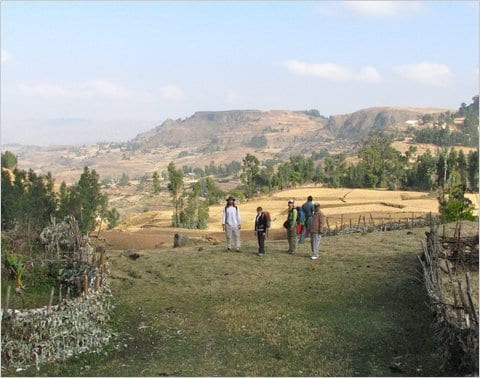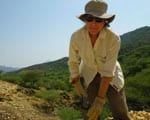SMU paleobotanist Bonnie F. Jacobs is sharing with the public her scientific field work in Ethiopia as it happens in real time through posts filed to the New York Times’ “Scientist at Work” blog.
Jacobs, one of a handful of the world’s experts on the fossil plants of ancient Africa, is part of a team of paleontologists hunting plant and animal fossils in Ethiopia’s prolific Mush Valley. Jacobs is an associate professor in SMU’s Roy M. Huffington Department of Earth Sciences.
The Times’ “Scientist at Work” blog features scientists’ first-person accounts of their field work as it unfolds day-by-day.
Jacobs filed her first post on Dec. 27 as the scientific team she is part of arrived in Ethiopia. Her most recent — and final — post of the current field season was published Jan. 21, A Last Look at Mush Valley.
Read the full text of Jacobs’ first post Dec. 27.
EXCERPT:
Bonnie F. Jacobs, a paleobotanist at Southern Methodist University, writes from Ethiopia, where she is studying fossils of ancient plant and animal life. The current field season in the Mush Valley of Ethiopia is financed by a grant to Ellen Currano of Miami University, Ohio, from the National Geographic Society Committee on Research and Exploration.
By Bonnie F. Jacobs
Monday, Dec. 27
This winter’s field season in Ethiopia is my tenth since I began working there, and despite my experience I am filled with anticipation. Our project is a relatively new one — studying rocks and fossils from an important period of history, 22 million years ago — and the location, Mush Valley, is also somewhat new to our team (last year was our first collecting trip here).Mush Valley is only about 160 kilometers northeast of the modern capital city, Addis Ababa, but it feels as though it could be a thousand miles away. Very little of city life intrudes into the villages of Upper and Lower Mush.
What really takes me away from it all are the rocks and fossils exposed by and alongside the Mush River. They provide us an exciting opportunity to document life, climate, landscape and atmosphere 22 million years ago. As we excavate blocks of fine-grained sediment — primarily shale — looking for clues to the past, the pivotal role played by that ancient time period is always on our mind.
Read Bonnie Jacobs’ full post from Dec. 27.
Read Jacobs’ Jan. 3 post: Eureka! A Fossil Bone, and Water Ferns to Boot
Read Jacobs’ Jan. 4 post: Evidence of Mammals and Legumes, 22 Million Years Old
Read Jacobs’ Jan. 7 post: Amid the Shales, Glimpses of an Ancient Forest
Read Jacobs’ Jan. 21 post: A Last Look at Mush Valley






